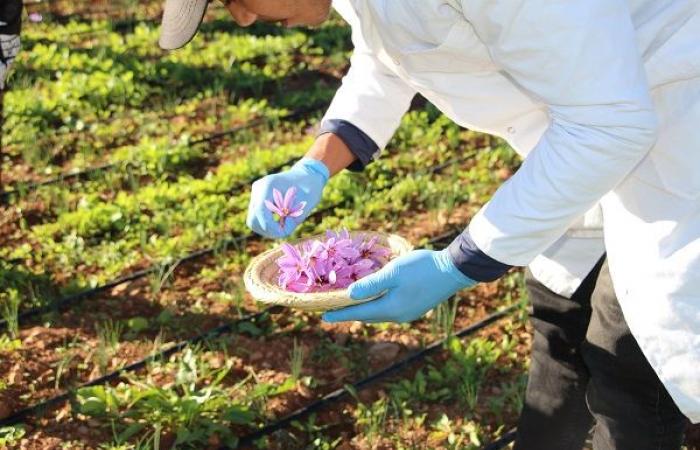After the introduction of new crops resistant to climate change in the Oriental region, notably the cultivation and production of quinoa seeds, comes the turn of saffron, a plant whose cultivation has recently aroused interest in the region, as a culture also contributing to the economic and social development of rural areas.
This new experience, the first of its kind in the province of Berkane, was undertaken by small farmers in the mountains of Bni Snassen, including a young person from the region, graduate of the Bni Snassen rural family house (class of 2012-2013) , which manages a pilot farm for growing saffron.
This pilot experiment in saffron cultivation in the province is in line with the orientations of the Generation Green strategy, aimed at the development of human capital, the improvement of living standards and the introduction of drought-resistant crops.
In this context, the Bni Snassen Rural Family House plays an important role as an innovative approach in terms of training and supervision of human capital in the rural world, in addition to supporting young people in launching their own projects and improving their income.
Hafida El Aallam, head of the agricultural production department at the Moulouya Regional Agricultural Development Office (ORMVAM), explained that the cultivation of saffron in the province of Berkane is part of the Generation Green Strategy and solidarity agriculture, specifying that this experience aims to introduce this product as an alternative crop resistant to climate change.
Ms. El Allam underlined, in a statement to MAP, that in this mountainous region, efforts are focused on the empowerment of small farmers through this culture, particularly women and young people, within the framework of a partnership with the Rural Family House and local cooperatives.
She noted that the objective of this experiment, which revealed encouraging results from its launch, is also to create significant employment opportunities and to promote the integration of young people and rural women into the socio-economic fabric.
In addition to this pilot experiment consisting of introducing the cultivation of saffron in the region, “we plan to extend it in the years to come, in particular with the imminent creation of a valorization unit”, she continued. , pointing out that there are several other local products that have been introduced to the region and shown promising results, including the cultivation of quinoa, argan, hawthorn and vegetable oils, particularly oil olive.
For his part, the president of the Association of the Bni Snassen Rural Family House, Mohamed Kadiri, highlighted the role that the association has played since its creation in 2010, particularly in the training of young rural people who have abandoned their studies , thus offering them a second chance for integration into the socio-professional environment.
Mr. Kadiri continued that the association, which works in rural areas, aims, through this second chance, to train young people in the agricultural field, whether it be breeding, arboriculture or of beekeeping.
He noted that the experience of saffron cultivation aims to allow these young people to learn new things and to help them, through the family home, to be in tune with the developments in the agricultural field, in cooperation with the Ministry of Agriculture as part of a partnership to support their training.
For her part, Jamila Oulafkir, technical assistant in the saffron cultivation project in the region, indicated that the idea of introducing this plant as an alternative crop comes from the fact that saffron is a plant resistant to climate change and does not require not large amounts of water.
She estimated that to succeed in this experiment which showed promising results, farmers benefit from support and supervision through a series of training courses initiated by the Association of the Rural Family House, covering in particular the techniques linked to this new sector in the region (soil preparation, harvesting methods, fertilization, product valorization, etc.), as well as the management of small agricultural businesses.
Like quinoa, carob and cactus, great hopes are placed on saffron and this type of crop, considered as a new and promising area, capable of diversifying agriculture in the Oriental region, contribute to the socio-economic development of women and young people, and provide concrete solutions to the problems of drought and climate change.






